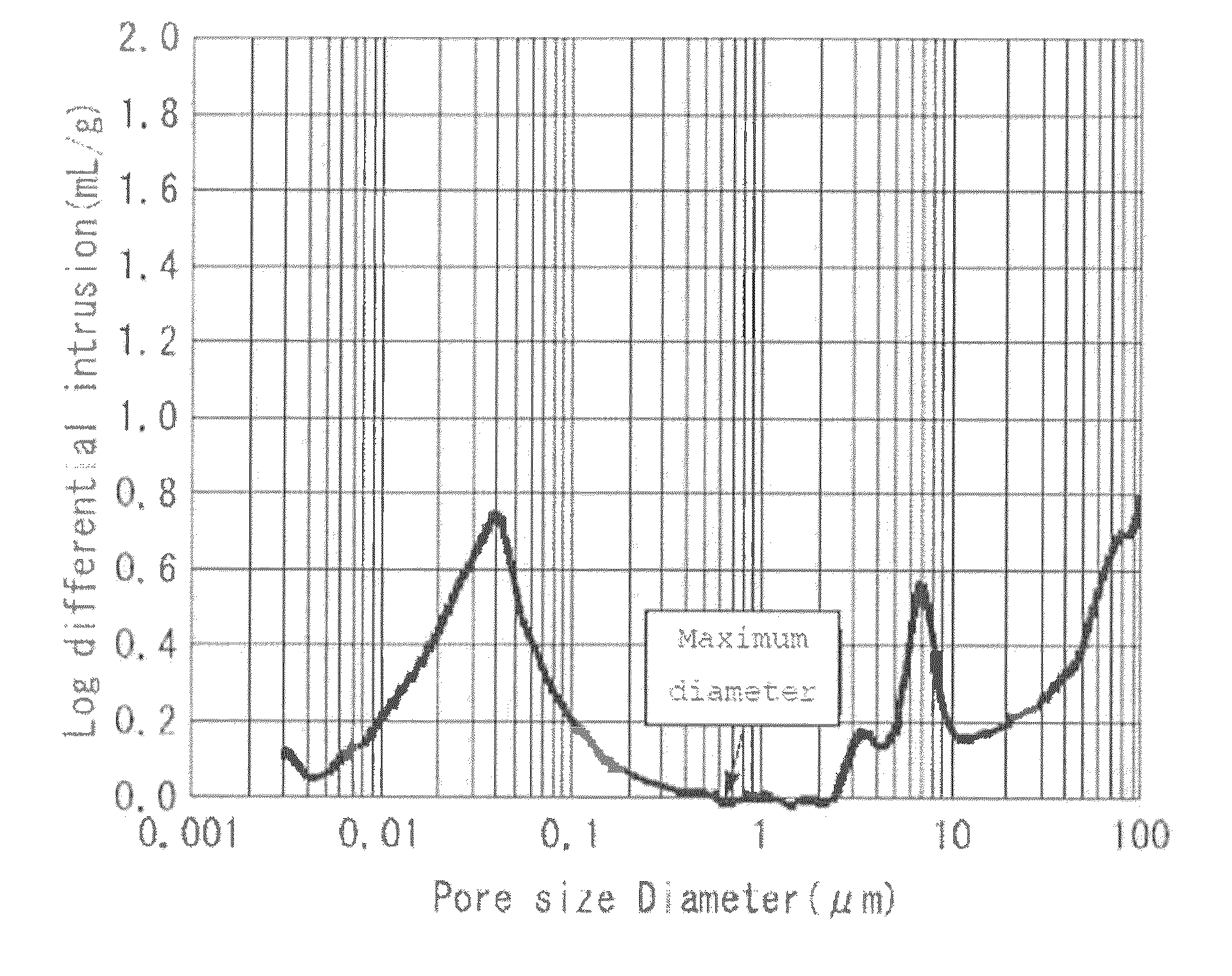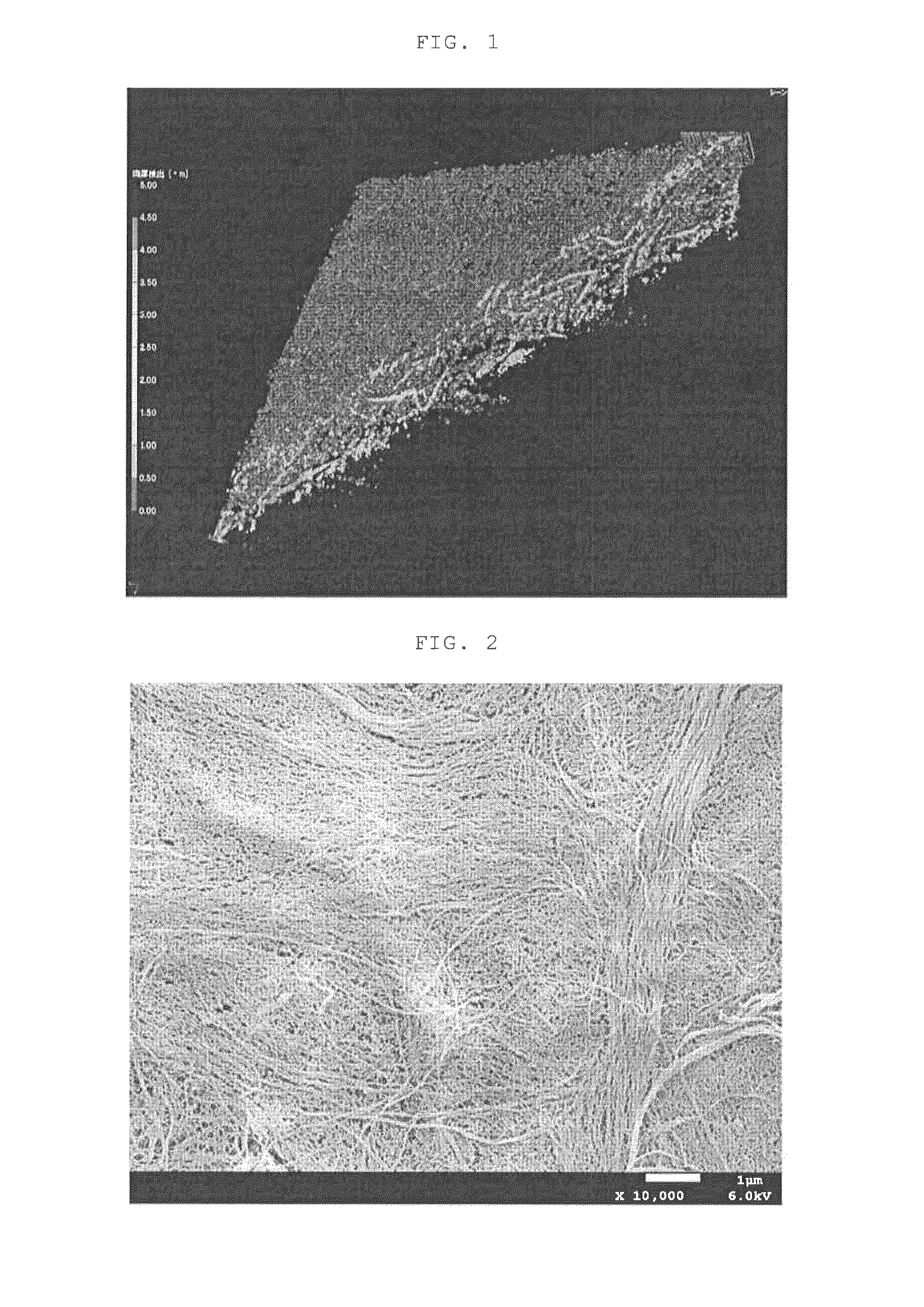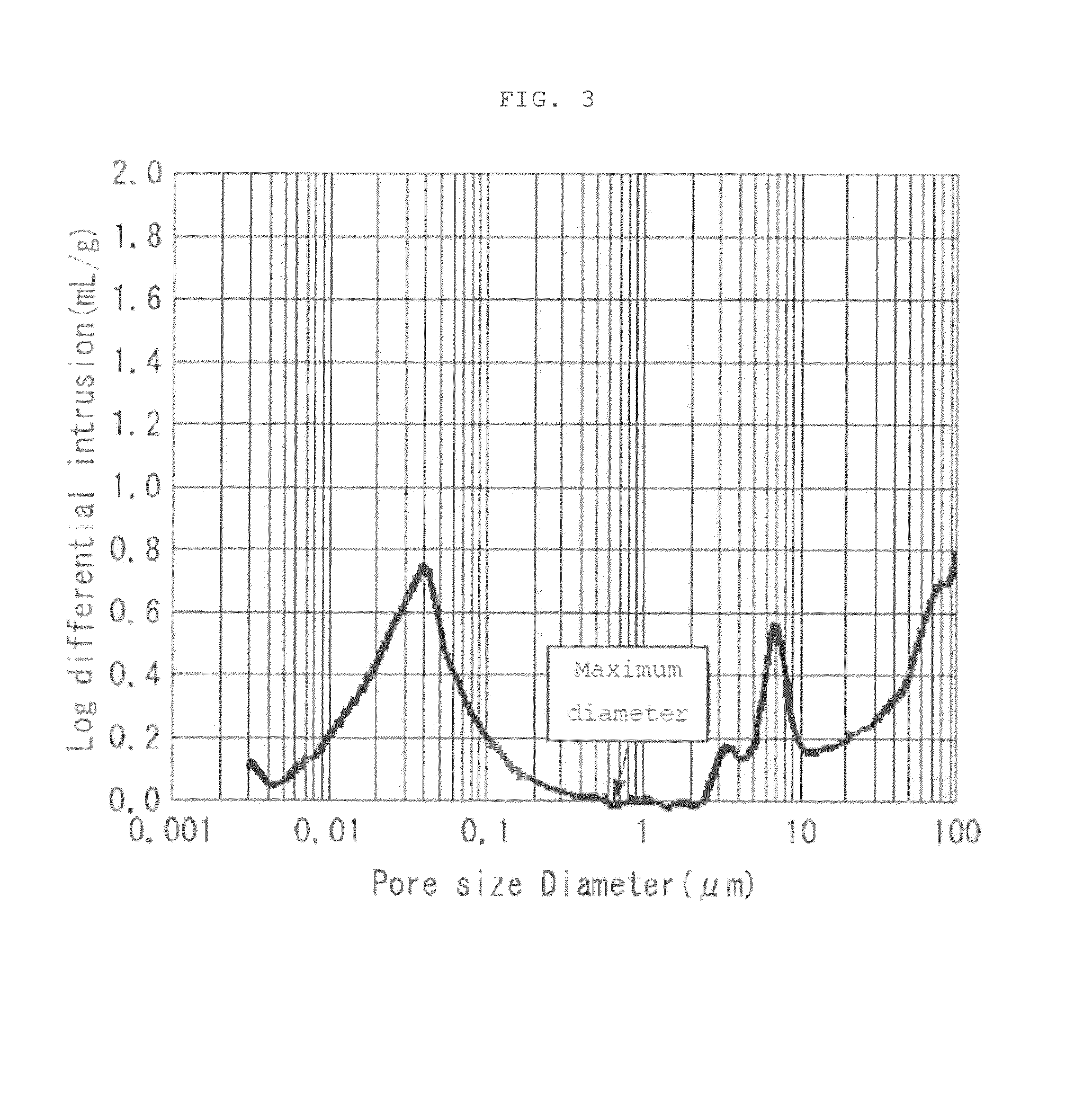Separator for electrochemical device and process for preparing the same
a separation device and electrochemical technology, applied in the direction of cell components, final product manufacturing, sustainable manufacturing/processing, etc., can solve the problems of increasing inner resistivity, cost of secondary batteries for vehicles, and inability to identify the cause of thermal runaway, etc., to achieve high lithium shielding properties, low volume resistivity, and sufficient strength
- Summary
- Abstract
- Description
- Claims
- Application Information
AI Technical Summary
Benefits of technology
Problems solved by technology
Method used
Image
Examples
example 1
[0093]NBKP was dispersed in ion-exchanged water so as to have a concentration of 3% by weight. The dispersion was subjected to a refining treatment by cycling under the conditions so that the number average fiber length ranged from 1.0 to 1.2 mm, by means of a double disk refiner. The dispersion of the cellulose fibers in which the number average fiber length ranged from 1.0 mm to 1.2 mm was treated three times by means of a mass colloider (manufactured by Masuko Sangyo Co., Ltd. Thereby, a raw material 1 of cellulose fibers having a number average fiber length ranging from 0.3 to 0.4 mm was obtained. In the same manner as described above, a raw material 2 of cellulose fibers having a number average fiber length ranging from 0.7 to 0.8 mm was obtained by treating with a mass colloider once. The aforementioned raw materials 1 and 2 of cellulose fibers were independently subjected to a treatment using a dehydration apparatus to have a concentration of about 5% by weight.
[0094]A raw ma...
example 2
[0096]A separator was prepared in the same manner as that of Example 1, with the exception of replacing the hydrophilic pore former with propylene carbonate having a boiling point of 240° C. and having a solubility with respect to water of 21% by weight, and adding the aforementioned hydrophilic pore former in an amount of 150 parts by weight with respect to 100 parts by weight of the aforementioned raw material. The sheet thickness of the obtained separator was 27 μm, and the porosity was 44%. An X ray CT analytical photograph of the separator obtained by Example 2 is shown in FIG. 1, a magnified photograph, FE-SEM photograph, of the surface of the separator of Example 2 is shown in FIG. 2, and the results of measuring pore distribution in accordance with a mercury penetration method are shown in FIG. 3.
example 3
[0097]A separator having a sheet thickness of 29 μm and a porosity of 46% was prepared in the same manner as that of Example 1, with the exception of replacing the amount of the solid content of raw material 1 of cellulose fibers with 80% by weight, and replacing the amount of the solid content of raw material 2 of cellulose fibers with 20% by weight.
PUM
| Property | Measurement | Unit |
|---|---|---|
| boiling point | aaaaa | aaaaa |
| diameter | aaaaa | aaaaa |
| frequency | aaaaa | aaaaa |
Abstract
Description
Claims
Application Information
 Login to View More
Login to View More - R&D
- Intellectual Property
- Life Sciences
- Materials
- Tech Scout
- Unparalleled Data Quality
- Higher Quality Content
- 60% Fewer Hallucinations
Browse by: Latest US Patents, China's latest patents, Technical Efficacy Thesaurus, Application Domain, Technology Topic, Popular Technical Reports.
© 2025 PatSnap. All rights reserved.Legal|Privacy policy|Modern Slavery Act Transparency Statement|Sitemap|About US| Contact US: help@patsnap.com



